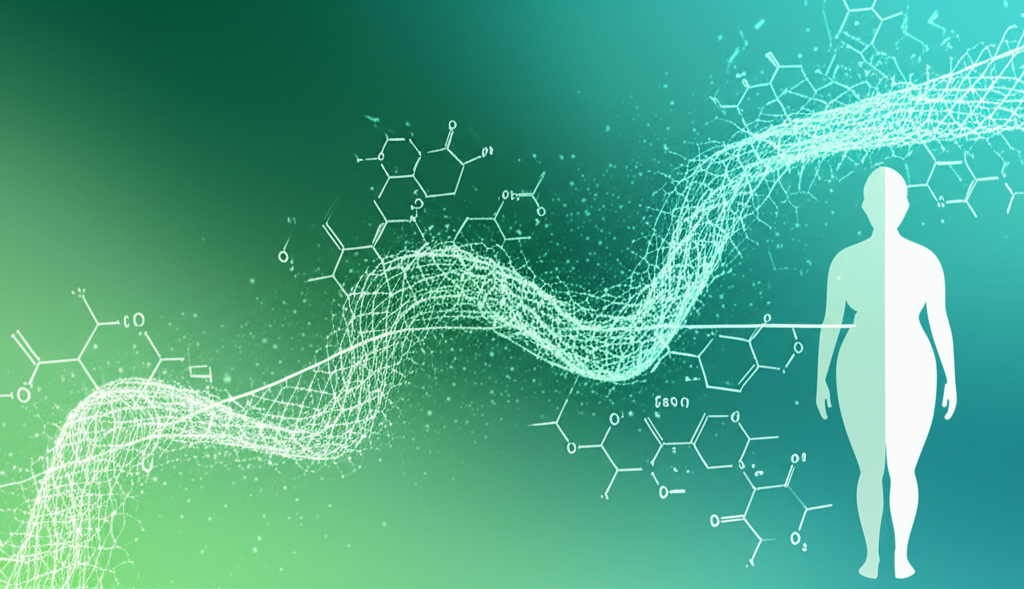“`html
What Peptides Are Good for Weight Loss: Essential Guide
Discover the best peptides for weight loss to help you shed pounds safely and effectively. This guide simplifies complex science, offering actionable advice for a healthier, lighter you.
Do you ever look in the mirror and wish the extra pounds would just vanish? You’ve tried dieting, working out, and skipping meals—but nothing seems to deliver the sustainable results you’re hoping for. The world of weight loss can feel overwhelming, filled with fad diets and complicated plans. But what if there was another way, a way that leverages your body’s natural processes to help you achieve your goals?
You’re not alone in this journey. Many of us struggle to find a weight loss solution that fits our lifestyle and delivers real, lasting change. The good news is that innovative approaches are emerging, and understanding them can empower you to take control of your health and your weight. This guide is here to demystify one such area: peptides. We’ll break down what they are, how they can help with weight loss, and which ones are considered the most beneficial for beginners like you. Get ready to discover a simpler, more effective path to a lighter, healthier you!
Understanding Peptides in the Context of Weight Loss

Let’s start with the basics. You might have heard the term “peptide” and wondered what it actually means. In simple terms, peptides are short chains of amino acids, which are the building blocks of proteins. Think of them like tiny messengers within your body. They play crucial roles in almost every biological process, from cell repair to hormone regulation.
When it comes to weight loss, certain peptides can act as powerful allies. They can influence appetite, metabolism, fat storage, and insulin sensitivity—all key factors in managing your weight. Unlike some drastic diet measures, peptides often work by supporting and optimizing your body’s natural functions, making them a more gentle and potentially sustainable approach.
Imagine your body as a sophisticated machine. Peptides are like specific tools or signals that help different parts of the machine work together more efficiently, especially when it comes to burning fat and managing energy. This guide will focus on the peptides that have shown promise in supporting weight loss efforts, making it easier for you to understand how they can fit into your own health journey.
The Top Peptides for Weight Loss: A Beginner’s Look
Not all peptides are created equal, especially when it comes to helping you shed those extra pounds. Several have been studied for their effects on appetite control, metabolism, and fat breakdown. Here, we’ll explore some of the most commonly discussed and promising peptides for weight loss, explaining what they do in plain language.
1. Semaglutide (Wegovy, Ozempic)
You’ve likely heard about Semaglutide, especially with the rise of medications like Wegovy and Ozempic. Semaglutide is a type of drug known as a GLP-1 receptor agonist. GLP-1 is a natural hormone that your body produces, and it plays a significant role in regulating blood sugar and appetite.
How it helps with weight loss:
- Reduces Appetite: Semaglutide mimics the action of the natural GLP-1 hormone, signaling to your brain that you are full. This means you feel satisfied with less food, naturally leading to reduced calorie intake.
- Slows Gastric Emptying: It also slows down how quickly food leaves your stomach. This further enhances feelings of fullness and helps prevent overeating.
- Regulates Blood Sugar: By improving insulin sensitivity, it helps your body use glucose more effectively, which can be beneficial for overall metabolic health.
Real-life example: Mark, a 45-year-old who had struggled with his weight for years, started Semaglutide under medical supervision. He found that his constant cravings for sugary snacks diminished significantly, and he felt full for longer after meals. Within six months, he had lost 30 pounds, which he attributed to finally being able to stick to a consistent, lower-calorie diet without feeling deprived.
Important Note: Semaglutide is a prescription medication and should only be used under the guidance of a healthcare professional. It’s important to discuss potential side effects and benefits with your doctor.
2. Tirzepatide (Mounjaro, Zepbound)
Tirzepatide is another powerful player in the GLP-1 space, but it also acts on another hormone receptor called GIP (glucose-dependent insulinotropic polypeptide). This dual action makes it particularly effective for both blood sugar control and weight loss. Medications like Mounjaro and Zepbound contain Tirzepatide.
How it helps with weight loss:
- Enhanced Appetite Suppression: Like Semaglutide, it significantly reduces hunger and increases feelings of fullness.
- Improved Metabolism: The combined action on GLP-1 and GIP receptors can lead to greater calorie expenditure and improved fat metabolism.
- Blood Sugar Control: It offers robust benefits for individuals with type 2 diabetes, but its metabolic effects are also key to its weight loss capabilities.
Consideration: Tirzepatide is also a prescription medication and requires careful medical supervision. Its efficacy is often noted to be even higher than Semaglutide for some individuals, but this also means potential side effects need to be managed closely by a doctor.
3. CJC-1295 & Ipamorelin (Growth Hormone Releasing Peptides)**
Now, let’s look at a different class of peptides that can indirectly support weight loss by influencing your body composition. CJC-1295 and Ipamorelin are often used in combination. They are known as growth hormone-releasing peptides (GHRPs) and growth hormone-releasing hormones (GHRHs analogs, respectively), which stimulate your pituitary gland to release more Human Growth Hormone (HGH).
How they help with weight loss:
- Increased Muscle Mass: HGH plays a role in building and maintaining muscle. More muscle mass means a higher resting metabolism, leading your body to burn more calories even when you’re not exercising.
- Fat Mobilization: HGH can help the body access stored fat for energy, promoting lipolysis (the breakdown of fats).
- Improved Body Composition: By encouraging muscle growth and fat loss simultaneously, these peptides can lead to a leaner physique.
Example Scenario: Imagine someone who is actively trying to lose fat but also wants to maintain or even build muscle. Combining CJC-1295 and Ipamorelin could help them achieve this by boosting their body’s natural HGH production, aiding fat loss while supporting the muscle that helps keep their metabolism high.
Note: These peptides are often available through compounding pharmacies or specialized clinics and require a prescription and medical advice. Their effects on HGH levels mean they should be used cautiously and monitored by a professional.
4. GHRP-6 (and similar GHRPs like GHRP-2)
GHRP-6 is another peptide that stimulates the release of HGH. It’s known for increasing appetite, which might seem counterintuitive for weight loss. However, in the context of a supportive fitness and diet plan, this increased appetite can be managed.
How it helps with weight loss:
- Stimulates HGH Release: Similar to CJC-1295 and Ipamorelin, it promotes HGH secretion, aiding in muscle development and fat breakdown.
- Appetite Stimulation: While this needs careful management, for some who struggle with inadequate food intake due to restrictive diets, controlled appetite increase can ensure proper nutrient intake for muscle building and energy.
- Potential for Increased Metabolism: The resulting increase in muscle mass can elevate resting metabolic rate.
Lifestyle Integration: Someone using GHRP-6 might incorporate it into their routine by timing its use around workouts and ensuring they consume nutrient-dense meals after it stimulates hunger, maximizing muscle recovery and growth while the HGH aids fat loss.
Caution: Due to its appetite-stimulating effects, GHRP-6 is best suited for individuals who can carefully manage their food intake and are focused on body recomposition (losing fat while gaining muscle). Professional medical guidance is essential.
5. Melanotan II (MT-II)
Melanotan II is a synthetic analogue of a hormone called alpha-melanocyte-stimulating hormone (α-MSH). While primarily known for its tanning effects due to increased melanin production, MT-II also has a notable side effect: appetite suppression and increased libido.
How it helps with weight loss:
- Appetite Suppression: A common reported effect is a significant reduction in hunger, making it easier to eat less.
- Increased Libido: While not directly a weight loss mechanism, this can be a positive side effect for some users.
User Experience: Many anecdotal reports suggest that users experience a noticeable decrease in appetite shortly after taking MT-II, making intermittent fasting or calorie-restricted diets easier to adhere to. Some also report increased energy levels.
Disclaimer: Melanotan II is not approved by the FDA for weight loss or any other medical use. Its use carries risks, including nausea, increased blood pressure, and potential for serious side effects. It is generally not recommended for beginners due to these risks and lack of formal approval for weight loss purposes.
Integrating Peptides into a Healthy Lifestyle
It’s crucial to understand that peptides are not magic pills. They are tools that can significantly support your weight loss efforts, but they work best when combined with a holistic approach to health. Think of them as enhancers for a lifestyle that already prioritizes well-being.
1. Nutrition is Key
No matter which peptides you might consider, a balanced and nutritious diet is non-negotiable. Peptides can help regulate appetite, but you still need to make healthy food choices to fuel your body effectively and create a calorie deficit for weight loss.
- Focus on Whole Foods: Prioritize lean proteins, plenty of vegetables, fruits, and healthy fats.
- Portion Control: Even with reduced appetite, be mindful of your serving sizes.
- Hydration: Drink plenty of water throughout the day.
A good starting point for nutrition is focusing on eating foods that nourish your body. For example, instead of a processed snack, opt for an apple with a small handful of almonds. This provides fiber, healthy fats, and nutrients, unlike a sugary cookie that offers empty calories.
2. Regular Physical Activity
Exercise is vital for both burning calories and building muscle, which boosts your metabolism. Peptides like CJC-1295 and Ipamorelin can specifically help with muscle building, making your workouts even more effective.
- Cardiovascular Exercise: Aim for at least 150 minutes of moderate-intensity aerobic activity per week (like brisk walking, jogging, swimming).
- Strength Training: Incorporate resistance training 2-3 times per week to build and preserve muscle mass. This can include lifting weights, using resistance bands, or doing bodyweight exercises.
Sarah, a busy mom of two, found that by incorporating an evening walk for 30 minutes four times a week, alongside cutting out sugary drinks, she saw significant improvements. When she later added strength training sessions twice a week, her progress accelerated, helping her lose 15 pounds in 3 months and feel more energetic.
3. Sleep and Stress Management
The connection between sleep, stress, and weight management is undeniable. Poor sleep and high stress levels can disrupt hormones that regulate appetite (like ghrelin and leptin) and increase cortisol, a stress hormone linked to fat storage, particularly around the abdomen.
- Prioritize Sleep: Aim for 7-9 hours of quality sleep per night. Establish a regular sleep schedule.
- Manage Stress: Practice relaxation techniques like deep breathing, meditation, yoga, or spending time in nature.
4. Consistency is Crucial
Sustainable weight loss is built on consistency. Peptides can help make adhering to a healthy lifestyle easier by managing cravings and improving metabolic function, but the daily choices still matter most. Small, consistent efforts compound over time into significant results.
A Sample Weekly Plan Incorporating Lifestyle Changes
To provide a practical example, here’s a snapshot of how you might structure your week, assuming you are also incorporating lifestyle changes that peptides can support. This is a template and should be adjusted based on individual needs and preferences.
| Day | Morning (e.g., 7 AM) | Afternoon (e.g., 1 PM) | Evening (e.g., 7 PM) | Activity Focus |
|---|---|---|---|---|
| Monday | Lean protein & greens scramble | Grilled chicken salad with mixed vegetables | Baked salmon with steamed broccoli | Cardio (30 min brisk walk) |
| Tuesday | Greek yogurt with berries and nuts | Lentil soup with a side salad | Lean beef stir-fry with brown rice | Strength Training (Full Body) |
| Wednesday | Oatmeal with chia seeds and fruit | Tuna salad (made with Greek yogurt) on lettuce wraps | Chicken breast with roasted sweet potatoes | Cardio (30 min elliptical) |
| Thursday | Smoothie (Protein powder, spinach, banana, almond milk) | Leftover chicken stir-fry | Vegetable curry with tofu and quinoa | Active Recovery (Stretching/Yoga) |
| Friday | Eggs with avocado and whole-wheat toast | Large mixed green salad with chickpeas | Lean turkey meatballs with zucchini noodles | Strength Training (Full Body) |
| Saturday | Whole-wheat pancakes with fruit | Healthy homemade burger (lean ground turkey/beef) on lettuce bun | Optional: A balanced meal out, mindful of choices | Leisurely walk or enjoyable outdoor activity |
| Sunday | Frittata with vegetables | Leftovers or a simple protein-focused meal | Roast chicken with mixed roasted vegetables | Rest & Meal Prep for the week |
Visual Suggestion: An infographic showing the breakdown of macronutrients (protein, carbs, fats) in these meals would be beneficial here.
Peptides and Their Mechanisms Explained
To truly appreciate how peptides work, a slightly deeper dive into their biological mechanisms can be helpful. This isn’t meant to be overly scientific, but to give you a clearer picture of the “how.”
GLP-1 Receptor Agonists (e.g., Semaglutide, Tirzepatide)
When you eat food, your intestines release GLP-1. This hormone communicates with your brain to tell you you’re full and also signals your pancreas to release insulin, helping to lower blood sugar. GLP-1 Receptor Agonists are synthetic molecules designed to mimic GLP-1. They bind to the same receptors, amplifying these signals. This leads to:
- Increased satiety signals to the brain = reduced hunger.
- Slower movement of food through the stomach = prolonged fullness.
- Enhanced insulin secretion in response to food = better blood sugar control.
For more detail on GLP-1’s role, you can check resources like the National Institute of Diabetes and Digestive and Kidney Diseases (NIDDK) on insulin resistance and hormone function.
Growth Hormone Secretagogues (e.g., CJC-1295, Ipamorelin, GHRP-6)
These peptides work by stimulating the pituitary gland to release growth hormone. Growth hormone has several effects relevant to weight loss:
- Lipolysis: It promotes the breakdown of stored fat cells, releasing fatty acids into the bloodstream to be used for energy.
- Muscle Growth: It supports protein synthesis, which is essential for building and repairing muscle tissue.
- Metabolic Rate: Increased muscle mass directly contributes to a higher resting metabolic rate, meaning you burn more calories at rest.
The mechanisms behind GH release are complex, involving interaction with specific receptors in the hypothalamus and pituitary gland. Understanding hormone balance is key, and resources from institutions like the Endocrine Society can provide further insights into hormonal functions.
Safety and Considerations for Peptide Use
While peptides offer exciting possibilities for weight loss, it’s absolutely paramount to approach their use with caution, knowledge, and professional guidance.



